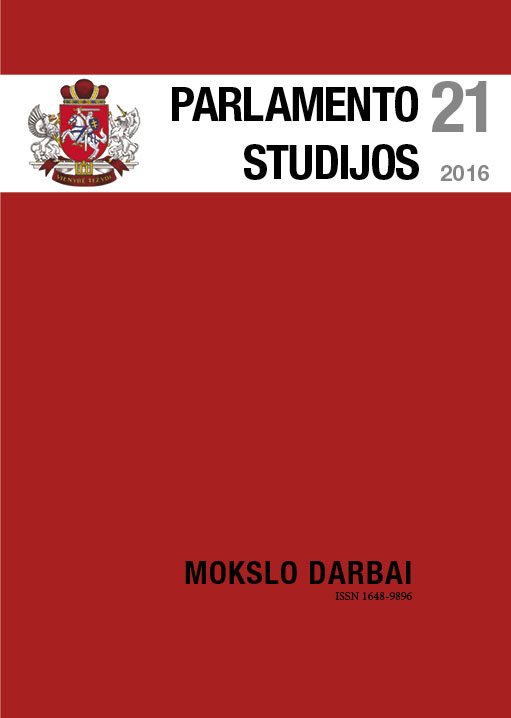Prime Minister Kazys Grinius in the Context of Internal Conflicts Among Peasant Populists (May 1920 – October 1921)
DOI:
https://doi.org/10.51740/ps.vi21.108Keywords:
Kazys Grinius, Peasant Populists, coalition government led by Kazys Grinius, Constituent assembly of Lithuania, Mykolas SleževičiusAbstract
This article reviews the relationships of Kazys Grinius, the leader of the coalition government composed of Cristian Democrats and Peasant Populists of the first Parliamentary and sixth restored independent Republic of Lithuania (1920 06 19 – 1922 02 02), and Peasant Populists that delegated him into this post.
Negotiations regarding the coalition were far from smooth and fast. The parties were divided not only by the political party’s programme provisions and distribution of ministries, but also by the perspective to the candidacy of the Prime Minister. Concessions made by Christian Democrats to the partner in the negotiation were not consolidated by signing of coalitional contract. It was rather obvious that the coalition was predestined to be short-lived. Prime Minister K. Grinius’ work was also complicated because of Peasant Populists’ not being unanimous.
The aim of this article is to reveal the circumstances of Prime Minister K. Grinius’ work which were determined by the internal problems of the Peasant Populist party.
The timespan under analysis with regard to Peasant Populists’ approach to the coalition and the delegated Prime Minister’s position may be divided into two stages. The first encompasses the time between June 1920 and January 1921, whereas the second starts in January and finishes in October 1921. The study is based on a collection of empirical sources.
Peasant Populists who had started to express their dissatisfaction with the coalition and K. Grinius’ work in the first stage, increased their pressure towards him until the 10th of November, when K. Grinius decided to resign. However, Peasant Populists did not accept K. Grinius’ resignation. In the period between the end of 1920 and the beginning of 1921 Peasant Populists’ opposition moods were growing. On the 20th of January the majority of Peasants voted “for” K. Grinius’ resignation. This voting marked the peak of Peasant Populists’ distrust in coalition partners and in the Prime Minister. Subsequently the pressure towards K. Grinius was decreasing and the influence of radicals in the Peasant Populist party was reducing. A change was observed in the attitudes of Mykolas Sleževičius, the leader of Peasant Populists. He started reconciling the radical and the moderate in the Peasant Populist party. The period between January and October 1921 was marked by a greater trust in Grinius and bigger sustainability of the coalition, at least externally. However, it was only the calm before the storm of the ideological division among the coalition’s partners which led to the coalition break-up in January 1922.
K. Grinius’ authority, experience in state- and party-related activities, his preference of state affairs over the ambitions of the party enabled him to resist the ambitions of Peasant Populists, at least temporarily stabilised the relationships among coalition partners and enabled the government to reach the goals in the complex historical period for Lithuania.








 The metadata of the scholarly journals and publications of the Lithuanian National Martynas Mažvydas Library is distributed by
The metadata of the scholarly journals and publications of the Lithuanian National Martynas Mažvydas Library is distributed by 